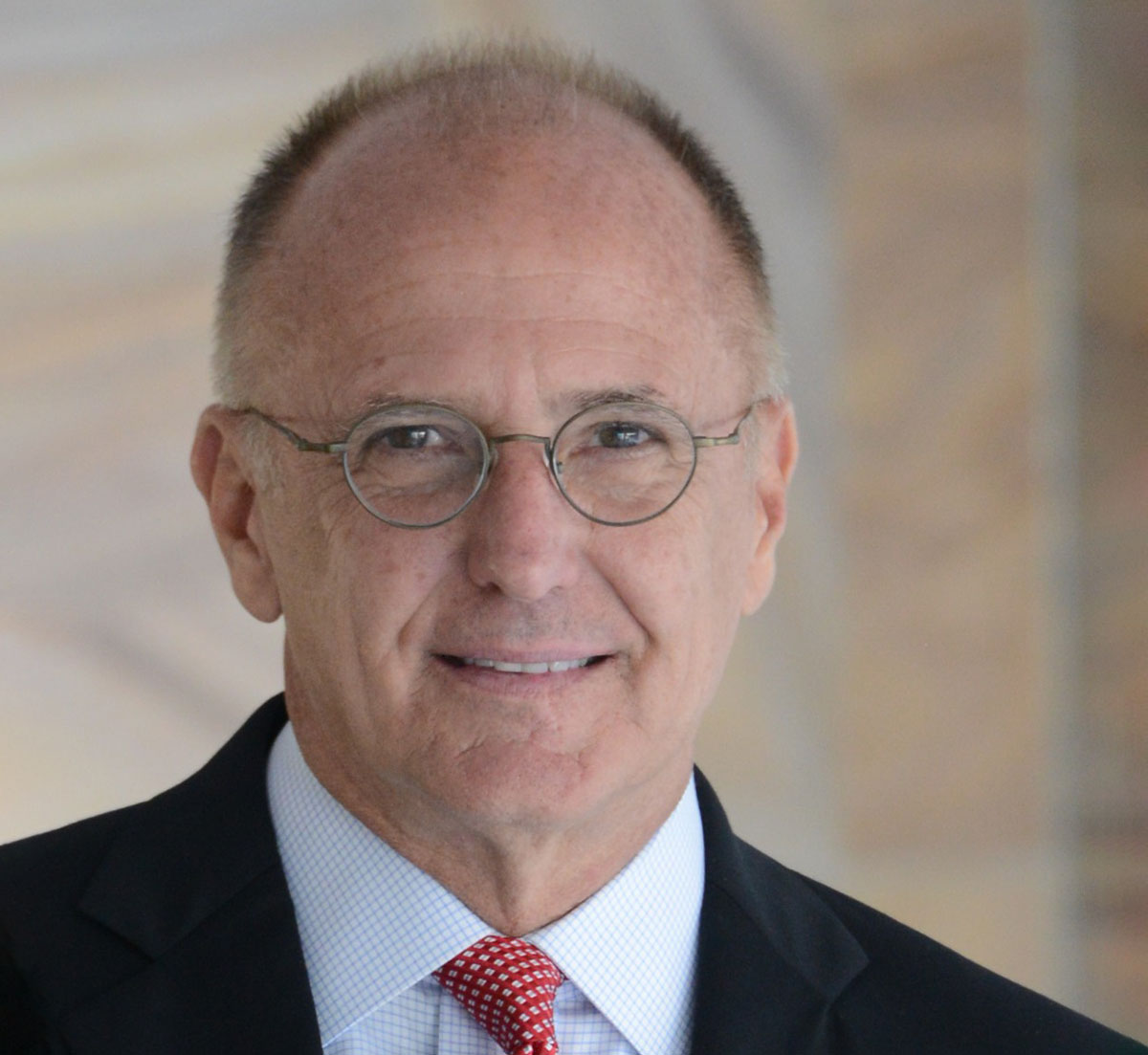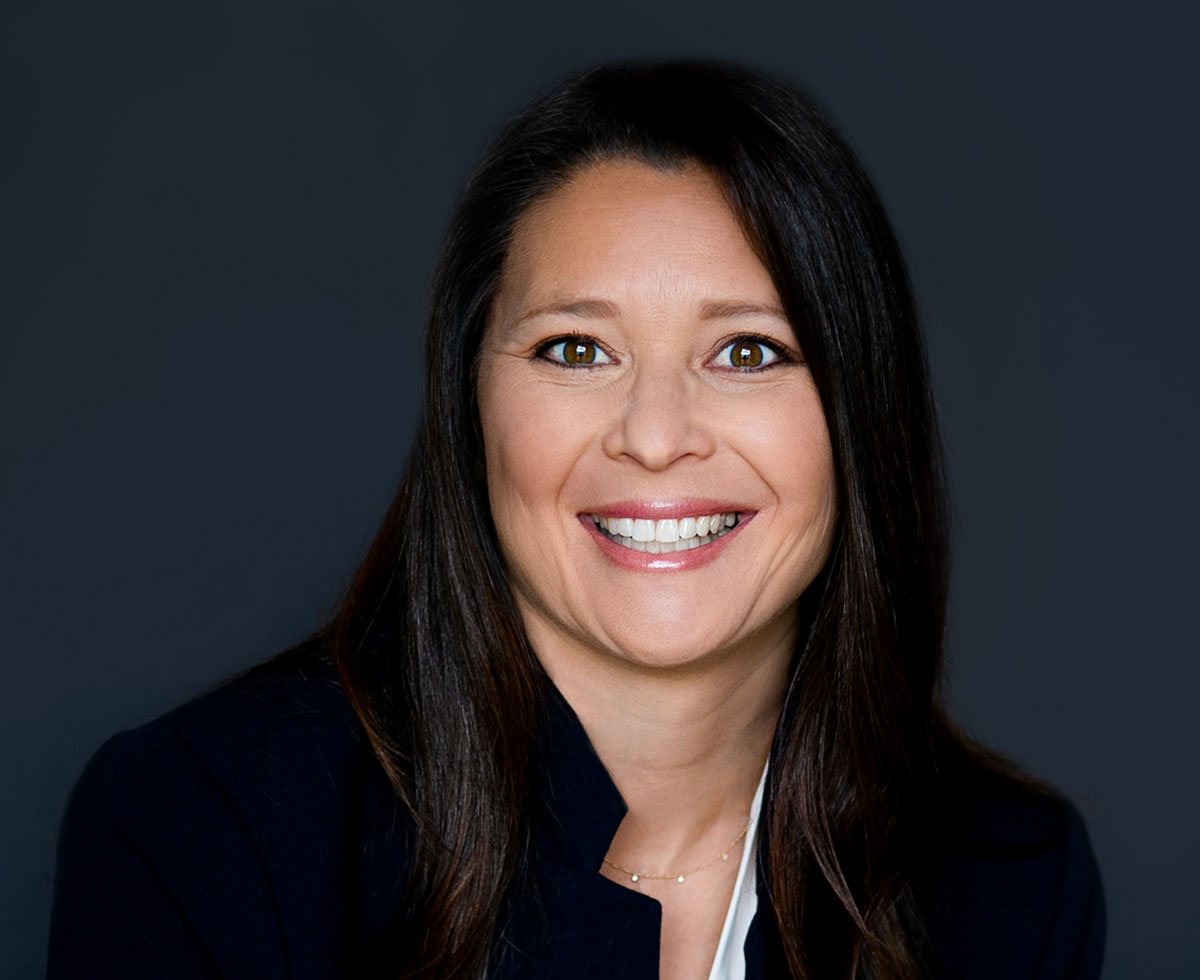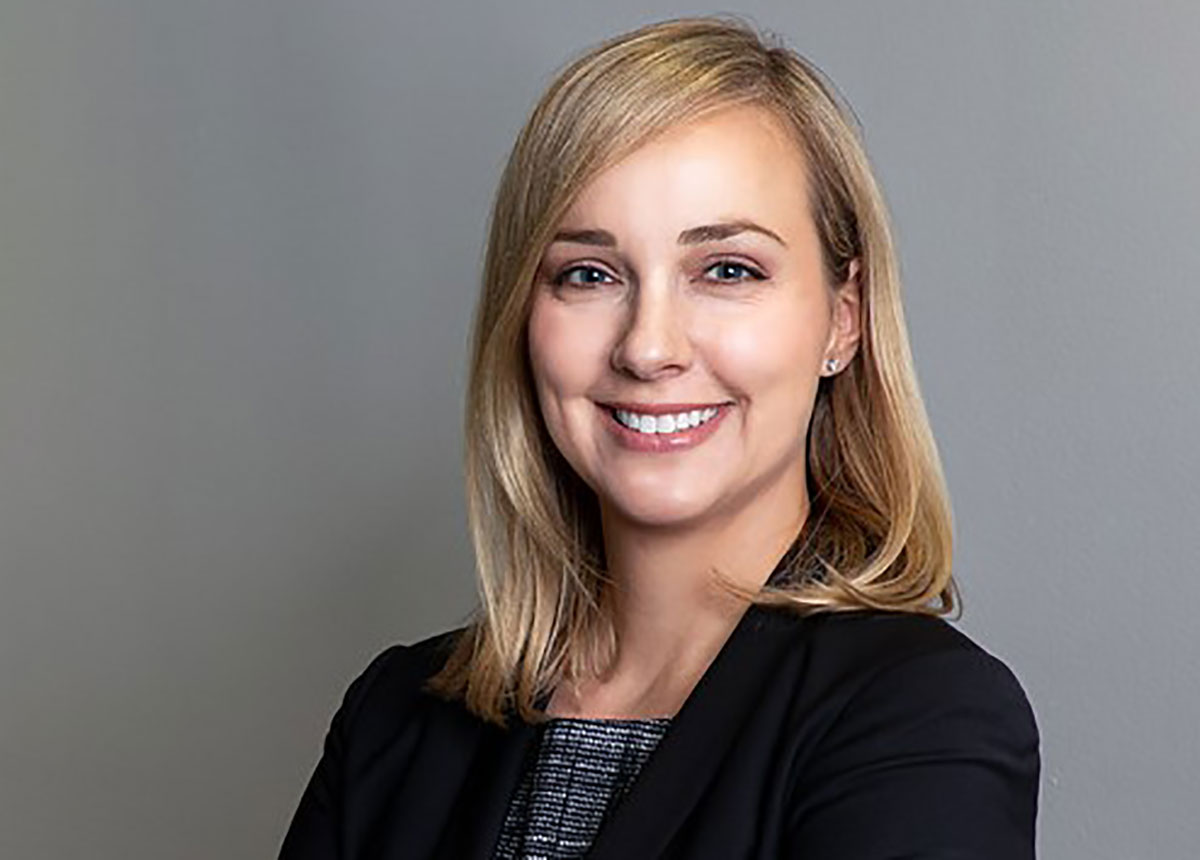
John Remsen Jr., president and CEO of the Atlanta-based TheRemsenGroup, says the pandemic has accelerated several long-term trends affecting the profession, especially with regard to technology and adapting to remote or hybrid working – about which attorneys have differing opinions. “Some people can’t wait to get back to the office; others are happy working remotely,” he says. “It took a pandemic to figure out that we can work remotely and remain productive. Productivity has not seen the big slip we thought it would.”
The trend toward working remotely had been inching along, but firms are now paying vastly more attention to it, and it’s unclear what “getting back to normal” will mean as the pandemic eventually wanes, Remsen says. “Senior lawyers tend to like paper, and collaboration, and going to the office,” he says. “They’re pushing the firm to go back to the way it used to be. Younger lawyers want to adapt, and pivot, and resist the temptation to go back to the way it used to be. We’re seeing that tension in many firms.”
Some firms have returned to in-person work, others haven’t, and still others are hybrid, says Stephanie Everett, CEO of The Lawyerist, based in Minneapolis. “Anytime you add any component of remote to the team, it requires different thinking, different systems and ways to communicate, and ways to monitor your work,” she says. “People are also realizing that they were forced to use technology in a different way during the pandemic and are appreciating what they can continue to use moving forward. Even firms that have returned to the office are realizing that Zoom meetings are efficient.”
A feature of the pandemic that Remsen believes seem here to stay are client portals, where clients can look at documents, ask questions, and pay bills. A corollary, perhaps, is a decline in big private offices. “Firms are downsizing their real-estate footprints, generally speaking, as people work remotely,” he says. “As firms can renegotiate leases, and as leases expire, you’re looking at a shrinking footprint.”
Everett views the pandemic as akin to a “waiting room” that lawyers and legal employers have been waiting to get out of, for two years. “Maybe the opportunity in 2022 is we’re out of the waiting room and moving forward with our businesses in whatever way that needs to look like,” she says. “You have to have increased flexibility to adapt to the conditions. It feels like they’re changing monthly, if not weekly.”

A feature of the pandemic that seems here to stay are client portals, where clients can look at documents, ask questions, and pay bills. A corollary to that is a decline in big private offices. “Firms are downsizing their real-estate footprints, generally speaking, as people work remotely. As firms can renegotiate leases, and as leases expire, you’re looking at a shrinking footprint.”
– John Remsen Jr., president and CEO of Atlanta-based TheRemsenGroup
Hot and Not Practice Areas
Overall, the legal profession has fared well during the pandemic, although this has varied by practice area, Remsen says. “The PPP loan money certainly didn’t hurt,” he says. “So many firms are saying, ‘We had our best year ever.’ Will it sustain itself? That’s to be determined. So far, the sky has not fallen.”
Jim Leipold, executive director of the National Association for Law Placement, agrees that demand has been “super-healthy.” Overall, Wisconsin and the Midwest have less of a boom-and-bust cycle than the coasts, with salaries and deal volume not quite as high, but “a real steadiness to the legal economy,” he says. “There’s nothing unique to Wisconsin that’s different from Minnesota or other neighboring states. It’s part of a Midwest economy dominated by smaller practices, other than in Chicago.”
What Do Clients Want? Remote Options
Research from Clio published in its 2021 “Legal Trends Report” shows that clients of legal offices want remote options.
Click to jump to the sidebar below
Corporate practices have been going “at a breakneck pace” after an initial pause in mergers and acquisitions and other transactions, and employment lawyers have kept very busy, Leipold says. “There have been so many new and novel questions that employers have had to answer, about vaccines, and employee safety, and quarantine exemptions,” he says.
Cybersecurity and data privacy also have been hot areas “as we’ve shifted business practices online,” while healthcare law “has continued to be a robust area,” Leipold says. “Litigation of course paused when the courts shut down, but even in that setting, we’ve seen courts pivot and conduct affairs online. … I think there will always be in-person trials, but we’ve learned some efficiencies, like medicine has with telemedicine.”
Another popular area, especially for recent law school graduates, has been public interest work, Leipold adds. “We’ve seen that as a sign of the times, and also generationally,” he says.
Real estate practice has been “red hot” as prices and rents go up and developments churn along, Remsen says. Downtown office buildings and shopping malls being repurposed into distribution centers and entertainment complexes generates “plenty of law,” he says.
On the consumer side, additional family time might be leading to more estate planning work “as people have had a chance to reflect,” as well as family law, “as people drive one another crazy,” Remsen says. Cybersecurity has been a hot area, in terms of both law practice and firms’ self-governance to ensure that they lock down client information, he says. And cannabis “is a brand-new industry, with a lot of law around it.”
Everett also hears about growth in areas like marijuana businesses, as well as electronic payment systems, bitcoin, and non-fungible tokens (NFTs). “We never saw the big bankruptcy boom that everybody was predicting” two years ago, she says. “Areas that continue to be strong are general representation of small businesses, and employment law, especially in light of COVID, and employers trying to navigate with their teams, and remote, and vaccination requirements.”
Worker’s compensation and insurance defense are challenging practice areas because of the “low-margin” work that has been commoditized, forcing law firms to become more efficient, Remsen says. “Insurance companies will always need plenty of lawyers, but they’re demanding clients,” he says. “They’re applying metrics to how they assess the performance of their counsel. They take a hard-nosed approach.”

“Anytime you add any component of remote to the team, it requires different thinking, different systems and ways to communicate, and ways to monitor your work. People are also realizing that they were forced to use technology in a different way during the pandemic and are appreciating what they can continue to use moving forward.”
– Stephanie Everett, CEO of The Lawyerist, based in Minneapolis
Marketing and Business Development
Jordan Furlong, legal sector analyst and forecaster with Law21, based in Ottawa, Canada, advises attorneys to pay less attention to hot practice areas and more to developing skills around collaboration and client service.
“What do lawyers need in their skillset, their toolbox, to be employable, to be valuable, to have opportunities to serve?” he says. “Lawyers don’t, as a rule, think of ourselves as market participants. That’s partly by self-selected nature, partly due to lack of business training in law school. Clients are these one-off entities that materialize in front of you, give you money to do something, and then disappear into the ether.”
Most lawyers see themselves as selling their expertise, but in most cases, Furlong says, “you’re competing on client service, on client relationships. Business people who operate in actual markets understand that. They pour money into customer service. Lawyers tend to be behind that curve.”
When it comes to marketing and business development, Remsen sees much greater activity taking place virtually, although not always particularly well executed. “I’m surprised more firms don’t invest in Zoom training for lawyers, and how they present on a video call – the background, the lighting, the camera quality, the sound quality, what they wear,” he says. “I’m still floored when I get on a conference call with lawyers, and people are practically in their pajamas, with their washer and dryer in the background.”
Clients are asking outside counsel to help them solve not only legal but also business-related issues, and they’re scaling back on firms they use, says Koree Khongphand-Buckman, Denver-based chief marketing & business development officer for Foley & Lardner LLP. “We need to bring the whole of the law firm to the whole of the client,” she says. The pandemic “has forced businesses to scale back on the number of firms and how they use them. We, as firms, need to be creative about how to help them with their entire business, and not just through a legal lens.”
Foley & Lardner has looked at key sectors in which the firm has strength and helps clients to spot trends in their sector while sharing best practices, Khongphand-Buckman says. “Clients see themselves, obviously, as a business within a sector. We need to see them in the same way,” she says. “What’s helping with that is leveraging a lot of data. That is not traditional for law firms, having really strong data to look at. That’s something we at Foley are focused on.”
Given fierce competition, firms also need to continuously strengthen their client relationships, Khongphand-Buckman says. “Clients want us to make their lives easier. That’s going to separate us from our competition – building relationships where clients know they can call us for anything. … You have to stay on top of client relationships. They can slip away quickly.”
That’s no less true in the Milwaukee market than in any of Foley’s other 24 offices, although Khongphand-Buckman sees Wisconsin as a place “with a lot of opportunity” for her firm. “The clients there are traditional Fortune 500 companies and family-owned companies with deep roots,” she says. “It’s a pretty tight-knit business community. Relationships are very strong.”
Building those relationships has shifted more toward online platforms and social media, including webinars, during the past couple of years, Khongphand-Buckman says. “The digital marketing and social media platforms have helped firms like ours start to build a really strong brand,” she says. “You’re able to get your messaging out there quicker and easier, in front of the right people, because it can be so targeted. … It’s hard to pull people away from their desk. It’s easier for them to log on and make connections.”
Wisconsin Factoids
The 2021 “Legal Trends Report” from Clio and the separate “Profile of the Legal Profession” from the American Bar Association contain several data points that place Wisconsin’s legal community in the context of the nation.
Hourly Rates. Wisconsin attorneys earn an average of $248 per hour and their firms bill an average of $235, placing the state on the more affordable end between the high of New York ($372, $351) and low of West Virginia ($163, $161). When adjusted for cost of living, Wisconsin’s rates rise to $265 and $251.
Average Salary. Attorneys in the Milwaukee metro area earn the highest average salary ($139,170) in the state, followed by Madison ($119,970), Racine ($113,770), and Green Bay ($107,230).
Utilization, Realization, and Collection Rates. Law firms in Wisconsin enjoy a 36 percent utilization rate, an 87 percent realization rate, and an 88 percent collection rate. All are above average nationally except for the collection rate, which sits in the middle of the pack.
Legal Population Count. Wisconsin had a relatively small rate of 2.6 lawyers per 1,000 people, at just under 15,500 attorneys for a population of just below 5.9 million – well below the national high in New York (9.2 lawyers per 1,000) and not far above the national low in South Carolina (2.1). The number of attorneys has risen 1.5 percent since 2011 in Wisconsin.
Legal Deserts. Not surprisingly, most attorneys in Wisconsin are located in urban counties, such as Milwaukee (4,045), Dane (2,696), and Waukesha (1,121). Fifteen counties have 10 or fewer attorneys. Buffalo County has one.

Legal employers have been hiring entry-level people by the bucket-load. “They’re calling it ‘The War for Talent.’” And they’re building brand awareness earlier in the law school experience. “It’s not, ‘I’m coming on campus to try to hire you.’ I’m coming to campus to enhance your education, talk about what we do, and maybe partner with a professor on a project. And then, by the second or third year, they know that firm. There’s a comfort level.”
– Jim Leipold, executive director of the National Association for Law Placement
Hiring and Placement
Hiring of new lawyers has been strong of late, with salaries going “up, up, up” at BigLaw firms, Remsen says, although firms have needed to embrace the hybrid model to attract and retain young lawyers. However, associate development can be challenging in the less-engaging remote environment, and firms need to concentrate on that issue, while still “creating a culture that accommodates and celebrates what younger lawyers are looking for,” he says.
Wellness programs – including psychological, physical, and financial wellness – are also on younger lawyers’ radar screens, Remsen says. “Firms are tuning in to this to create a culture of what young people are looking for – more remote working, more feedback, a clear track to partnership, a firm that cares about me and my career,” he says. Compensation systems are becoming more performance-based – “not just dollars but also leadership” – and less about “lockstep seniority,” he adds.
Staffing has been a pain point for law firms during “the great prioritization, or great resignation, or whatever people want to call it,” Everett believes. “We are seeing firms struggle to hire and keep their team, and it’s bringing up new issues around compensation and benefits. … They have an opportunity to compete, but they have to be intentional about it.”
Getting team members excited and engaged in their work, and how they’re contributing, is a “huge challenge, and along with that, there’s a recognition that lawyers historically have not been trained in management,” Everett says. “This gets heightened when you move to a remote work environment. How do you communicate with team members? How often? What are you communicating? … It doesn’t mean you’re micromanaging. It means you’re supporting them in a way that makes sense.”
Leipold of NALP agrees that after an initial pullback, legal employers have been hiring entry-level people by the bucket-load. “They’re calling it ‘The War for Talent,’” he says. “I think that’s a little overblown. But there’s healthy hiring at the top firms, and that has a ripple effect. Students in other places in the job market benefit from that.” Law schools have helped this picture by bringing in smaller classes over the last six years or so, although the somewhat larger class that entered last fall might struggle a bit more when it graduates in 2024, Leipold adds.
Legal employers have been building brand awareness earlier in the law school experience, Leipold says. “It’s not, ‘I’m coming on campus to try to hire you.’ I’m coming to campus to enhance your education, talk about what we do, and maybe partner with a professor on a project,” he says. “And then, by the second or third year, they know that firm. It’s on their radar screen. There’s a comfort level.”

Attorneys should do more to develop skills around collaboration and client service. “What do lawyers need in their skillset to be employable, to be valuable, to have opportunities to serve?” In most cases, “You’re competing on client service, on client relationships. Business people who operate in actual markets understand that. They pour money into customer service. Lawyers tend to be behind that curve.”
– Jordan Furlong, legal sector analyst and forecaster with Law21, based in Ottawa, Canada
Different Expectations
Amber Davidson, president of legal talent solutions for Trustpoint One, also anticipates both that there will be a “strong stream of new grads into the marketplace” and that those new lawyers will have different expectations than past generations.
“They’re looking for employers to offer things that traditionally you don’t find in law-firm culture, for example, employers whose values align with theirs,” says Davidson, who is based in Milwaukee. “ESG [environmental-social-governance] is big in the hiring marketplace right now. They want to see on law firms’ websites what they stand for, where they invest their money, the stands they take as it relates to politics, where they invest money in charity.”
In addition, Davidson agrees with others that younger attorneys will want more work-life balance in the offers they receive because they’re “less focused on compensation, less on billables, with more freedom to work a hybrid schedule, which a lot of law firms are grappling with. So many senior partners who are new in the virtual work space have been forced to embrace it, but they are reluctant to hire folks who can’t be on site full time.”
Firms are hiring contract attorneys to fill in practice areas for which they face a shortage of talent compared to the workload, Davidson says. “It’s very difficult to find talent as a result of the pandemic, and all the economic change,” she says. “To make up for the ability to hire quickly, we’re placing contract attorneys who want the prestige and the opportunity to work for BigLaw but don’t necessarily want the commitment that goes with it.”
Attorneys across Wisconsin might find new remote doors opening, Davidson says. “Big, progressive firms are looking for legal talent in places like Wisconsin,” she says. “For firms in smaller markets that are under-resourced and finding it difficult to land talent, this is a good time to consider hiring somebody remotely in Madison or Milwaukee and giving them a hybrid opportunity, to commute in once a week or once a month. … Someone who runs a small boutique practice out of Manitowoc or Appleton, if they’re not finding the talent they need, they should be looking at contract attorneys as a solution.”

“Businesses have scaled back on the number of firms and how they use them. We, as firms, need to be creative about how to help them with their entire business, and not just through a legal lens. Clients see themselves, obviously, as a business within a sector. We need to see them in the same way. What’s helping with that is leveraging a lot of data. That’s something we are focused on.”
– Koree Khongphand-Buckman, Denver-based chief marketing and business development officer for Foley & Lardner LLP
The In-house Option
In-house-counsel careers continue to be very appealing to younger lawyers, Leipold says, given the work-life balance that tends to be available – but such positions continue to tend to be a lateral move after working in a firm for a while, rather than straight out of law school.
“The in-house-counsel role has really evolved, from a risk management role to a real C-suite partnership, and a strategic position to help lead a corporation forward,” he says. “They really want people who will be business partners, who will take a keen interest in the underlying business, who will not just be lawyer but help them grow their market position.”
Students and younger lawyers who want to go in-house need to understand that the corporation will, in effect, be their client, Leipold says. “They’ve got to be business savvy, have financial literacy, understand a corporate balance sheet,” he says. “Whether it’s oil and gas, or a Silicon Valley startup, or a large interstate banking operation, they’ve got to take an interest beyond the law, in order to be a successful business partner.”
Corporate legal departments, law firms, and anyone else who is hiring need to move quickly as they consider resumés and begin the interview process and then make the most competitive offer possible, Davidson says.
“We expect an uptick in hiring on the corporate counsel side in 2022,” she says. “We’ve seen a nice surge in new roles for folks who have a corporate and general traditional background. … Candidates are receiving multiple offers. We’ve heard from too many [legal placement] clients that they’ve missed out on great talent because they didn’t move quickly enough. There was a part of the offer they couldn’t meet, and someone else grabbed the candidate.”

Firms are hiring contract attorneys to fill in practice areas for which they face a shortage of talent compared to the workload. “For firms in smaller markets that are under-resourced and finding it difficult to land talent, this is a good time to consider hiring somebody remotely in Madison or Milwaukee and giving them a hybrid opportunity. If they’re not finding the talent they need [locally], they should be looking at contract attorneys as a solution.”
– Amber Davidson, president of legal talent solutions for Trustpoint One, based in Milwaukee
Diversity
Job candidates not only want work-life balance and values that align with theirs, but also want to know more about diversity, equity, and inclusion, Davidson says. “This is a big turn-on for anyone who’s looking to make a move, that they’re going to be working in an inclusive environment,” she says. “Do they [the employer] have a story to tell? Is that story available? If you want to be competitive as an employer, you have to put that out there, on your website. It has to be available as part of the candidate experience.”
The legal profession has made merely incremental progress in advancing diversity, according to research by the National Association of Law Placement focused on major law firms. At the associate level, for example, 26.48 percent were people of color in 2020, for the first time ever more than 5 percent were Black, and more than 3 percent were Black women – but that’s just 1/10 of 1 percent higher than a decade ago. Overall, 47.5 percent of associates were women and 26.5 percent were people of color, up from 45.4 percent and 19.5 percent, respectively, in 2010.
At the partner level, women were slightly more than one-quarter, while Black partners reached 2 percent for the first time, and Black and Latinx women each represented less than 1 percent of partners. Overall, 25.0 percent were female and 10.2 percent were people of color, up from 19.4 percent and 6.1 percent, respectively, a decade earlier. Seven of the 10 least diverse legal markets were in the Midwest, including Milwaukee, NALP found.
Leipold believes firms and other employers have been more tightly focused on diversity since the racial reckoning that followed the murder of George Floyd in May 2020, which “has motivated legal employers of all sorts, but particularly law firms, to tackle the inequities in our legal system more directly,” he says. “We’ve seen law firms even more aggressively recruiting diverse students out of law school, offering 1L fellowships and scholarships.”
While recruiting a diverse group has been somewhat successful for firms, the challenge has been steeper when it comes to retention, Leipold says. “We still see tremendous gaps at the partnership level,” he says. “In the partnership-promotion round this year, we saw law firms across the board promoting more women and people of color. But many law firms still have cultures where not everyone feels included. They have to solve that, or they’re going to lose too much talent.”
In Wisconsin and elsewhere, larger firms have been more successful in recruiting and retaining diverse groups due to more resources and the fact that it’s easier to create a critical mass. The smaller firms that dominate Wisconsin have a tougher time, Leipold says. “It’s a harder thing, if you’re a firm of 10 or 20, or even 50 lawyers, to create the richer diversity that reflects society. But the pressure is on,” he says. “Young women and people of color, if they don’t see themselves in those firms, they’re not going to be interested in that as an employment destination.”

Not only are law firm administrators struggling to manage the day-to-day business and complexities that go with a law firm during a pandemic, “but you’re spending a lot more time trying to implement even more IT security policies to prevent a breach. If you didn’t have the right infrastructure in place to protect against malware or some other type of technology issue, it’s costing a lot of time and causing problems.”
– Michael Bumgarner, president of the Association of Legal Administrators and CEO of Flaherty Sensabaugh Bonasso in Charleston, West Virginia
Law Firm Administration
Law firm administrators have been struggling with the nuts-and-bolts of how to manage a firm during a pandemic, says Michael Bumgarner, president of the Association of Legal Administrators and CEO of Flaherty Sensabaugh Bonasso in Charleston, West Virginia.
“Not only are you trying to manage the day-to-day business and complexities that go with a law firm, but you’re trying to manage who’s working remotely, who’s in person, how you deal with COVID quarantines because of exposure or an actual positive case,” he says. “How do you manage the workflow because of that new wrinkle in life? That’s been more than an undercurrent. It’s one of the first things you have to deal with every day.”
 Ed Finkel is an Evanston-based
freelance writer.
Ed Finkel is an Evanston-based
freelance writer.
The move to remote work has underscored the importance of cybersecurity policies and insurance, as fraud and breaches have increased, and the cost of coverage has gone up 30 percent to 40 percent to account for the spike in claims, Bumgarner says. “You’re spending a lot more time trying to implement even more IT security policies to prevent a breach,” he says. “If you didn’t have the right infrastructure in place to protect against malware or some other type of technology issue, it’s costing a lot of time and causing problems.”
Client expectations related to certain types of costs have changed as a result of the pandemic, in particular depositions and court hearings that no longer require travel time and expenses, Bumgarner says. “Before, you could bill a client to travel somewhere to attend a hearing. Now suddenly you’re not,” he says. “So that both reduces your billable hours – which is good and bad, you can work on other stuff – but it potentially is going to affect how much work you have.”
Managing office space has become an issue for legal administrators as people have shown they can work remotely and offices sit idle, says Bumgarner, who knows of one Los Angeles firm that vacated an entire floor when its lease came due. “That’s a huge savings,” he says.
Legal administrative departments have faced the same “great resignation” as on the attorney side of the house, Bumgarner says. “Whether it’s the lawyers or professional staff, people are making different decisions today than they have in the past about how they want to work and where they want to work,” he says. “So that’s made it a challenge in finding and retaining good people.”
Anecdotally, Bumgarner believes he’s seen a particularly notable increase in job ads for new administrators in upper-Midwest states such as Michigan and Wisconsin, possibly due to people deciding to retire early. That points to the need for firms to have a succession plan in place not just for top rainmakers but also for key business professionals who manage their firms.
“If they’re big enough to have [administrators], they have to make sure they have business continuity and succession planning for the people who run their business,” he says. “When lawyers have somebody in place to manage payroll or HR, then suddenly they’re gone, and [firm leaders] don’t have a plan in place – that’s a problem.”
Regulatory Issues
Another set of challenges that legal offices face revolve around regulatory innovations, particularly those that have come into place in Arizona and Utah related to restrictions on sharing fees with nonlawyers, equity ownership of law firms by nonlawyers, and alternative delivery of legal services, says Furlong of Law21.
“Arizona is probably the most radical of the group,” he says. “They said these restrictions are blocking the access to justice, they aren’t doing anything to improve legal services, and out they go.” Utah’s moves are more “probationary” than Arizona’s, creating a “middle pathway” to sort out how well such innovations actually play out in practice, Furlong says. Committees and task forces in Washington state, North Carolina, and California are investigating and making recommendations on such moves, he says, while an effort to do so in Florida was unanimously rejected in December by the Florida Bar board of governors.
Remsen says he’s been trying to put the issue of alternative business structures on the radar screens of the managing partners with whom he works, based on what’s happening in places like Utah and Arizona. He notes that “the drive for change is not coming from the legal profession; it’s coming from the courts, in the spirit of access to justice. … Very few law firms are tiptoeing in here. Might this be expanding to other jurisdictions around the country? I think it will. It surprises me how few lawyers and how few managing partners outside Arizona and Utah are paying attention.”
Another realm in which Furlong sees ferment – and one where Wisconsin remains an outlier for now – is in the licensing of lawyers to enter the practice. For now, Wisconsin remains the only state to allow for “diploma privilege,” in which a graduate of an in-state law school does not “need to retest what is essentially on the curriculum of the law schools in our state,” he says. “We don’t have any higher instances of complaints or incompetence or any other issues than any other states. There’s no difference here in the quality of lawyers or quality of service. Which is a lesson you would think other states would take, but they have not.”
A proposal to the state bar board of examiners in Oregon would provide a variety of alternative pathways to passing the bar, such as accumulating 1,000 hours of practice as a mentee of a practicing lawyer, Furlong says. “The argument is that this is hands-on, real-world experience with actual clients, supervised by lawyers, in the delivery of real legal services. That’s far more of a test of competence and quality than the bar exam,” he says. “I don’t know where that’s going.”
Other states like New York and California have task forces studying the issue, Furlong notes. “I don’t think any of the other states are proposing that if you get a law degree in our state, you don’t need to” do anything further, he says. “But it might be that Wisconsin won’t be the only state in which you don’t need to do the bar exam.”
What Do Clients Want? Remote Options
Research from Clio published in its 2021 “Legal Trends Report” shows that clients of legal offices want remote options.
Remote Legal Services. Over the past three years, clients and potential clients who expect a law firm will have remote capabilities skyrocketed, from 23 percent (in 2018) to 78 percent (in 2021), says Joshua Lenon, lawyer-in-residence at Clio. “Remote legal services are now a table-stakes offering,” he says. “Gen X and millennials are more predisposed to want remote options, but even a majority of Baby Boomers want remote options.”
People in rural parts of Wisconsin, as in many states, face greater challenges gaining legal representation, Lenon says, and the shift to remote legal services has helped address that issue – to the benefit of clients in “legal deserts” and more entrepreneurially minded attorneys who “can reach out to legal deserts and service them in an effective way. Courts are more open than ever to remote appearance, there’s a shift in client expectations toward [thinking] ‘this is a good way to work with a lawyer,’ and you have technology enabling that.”
Videoconferencing. A related preference that’s changed during the pandemic is related to types of interactions. In 2018, people preferred meeting a lawyer either in person, over the telephone, or using email. By last year, videoconferencing – a very small percentage three years earlier – had jumped into the top three, Lenon says.
Paying Online. “When it’s not a synchronous communication moment, like paying a bill or getting a status update, asynchronous opportunities have risen as well,” he says. “In 2018, paying in person was seen as the primary way to pay a lawyer – swing by the office, drop off a check. … That has completely flipped now. The vast majority want to pay online.”
Self-reliance. A growing cohort of legal services consumers has become self-reliant during the pandemic, either deciding to handle legal problems themselves or just to live with them. But that’s not set in stone, Lenon says. “Do clients on the whole feel comfortable with self-legal-services? We’ve seen that it’s only up to a point,” he says.
Client-centric Options. However, according to a longitudinal study over the past several years conducted by Clio, law firm growth has been mostly due to greater utilization by a small percentage of clients, Lenon says. “Where they’re making those gains is by offering client-centric options,” he says. “Client intake online, client portals for when they convert, and online payment options.” Firms that offer online payment have 8 percent more matters open, on average, he adds.
Convenience. The judicial system and legal community in Wisconsin have done a relatively good job in making legal services more convenient; one example is a shuttle service for people who have to appear in court in Milwaukee, Lenon says. “The Legal Trends Report shows that clients want these types of options and that firms that offer them have a competitive edge,” he says.
» Cite this article: 95 Wis. Law. 18-27 (February 2022).
